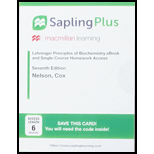
Concept explainers
(a)
To determine: The other types of recombinant plasmids found among transformed bacteria that are tetracycline resistant and how can they be distinguished.
Introduction:
A plasmid is a small, circular, extra chromosomal DNA. They are naturally occurring entities of bacterial cells, but sometimes they are also seen in some eukaryotic cells. Often, the genes present within the plasmids provide bacteria with certain genetic advantages that include antibiotic resistance. Cell has its own plasmid that naturally provides them resistance towards some antibiotics.
(b)
To determine: The different patterns of cloned DNA at each lane.
Introduction:
A plasmid is a small, circular, extra chromosomal DNA. They are naturally occurring entities of bacterial cells, but sometimes they are also seen in some eukaryotic cells. Restriction enzymes are also known as molecular scissors. The restriction enzymes can produce blunt ends as well as sticky ends. In molecular genetics, type II restriction enzymes preparing sticky ends are preferred as the site of recognition and site of cleavage is the same for Type II restriction enzyme unlike the other two.
Want to see the full answer?
Check out a sample textbook solution
Chapter 9 Solutions
SaplingPlus for Lehninger Principles of Biochemistry (Six-Month Access)
- 1. Below is a template strand of DNA. Show the mRNA and protein that would result. label the ends of the molecules ( refer to attached image)arrow_forwardAttach the followina labels to the diagram below: helicase, single stranded binding proteins, lagging strand, leading strand, DNA polymerase, primase, 5' ends (3), 3' ends (3) (image attached)arrow_forward1. How much energy in terms of ATP can be obtained from tristearin (stearate is 18:0) Show steps pleasearrow_forward
- Multiple choice urgent!!arrow_forward1. Write the transamination reaction for alanine. Indicate what happens next to each of the molecules in the reaction, and under what conditions it happens. 2.arrow_forwardCH3 17. Which one of the compounds below is the HNO3 H2 1. NaNO2, HCI Br₂ 1. LiAlH4 major organic product H2SO4 Ni 2. CuCN, KCN FeBr3 2. H₂O, H+ obtained from the following series of reactions? CH3 toluene CH3 CH3 Br Br Br CH3 CH3 && Br Br NH₂ A NH₂ NH₂ B C NH₂ ΝΗΣ D Earrow_forward
- 13. Which one of the compounds below is the major organic product obtained from the following series of reactions? A + H2C=CH-CO Me heat (CH3)2NH 1. LiAlH4 2. H₂O ? 1,3-butadiene OH 'N' B C 14. Which one of the compounds below is the major organic product obtained from the following series of reactions? 'N' D 'N' E 1. XS CH3I 'N' 2. Ag₂O 3. H₂O, A A B с D E Narrow_forwardA NH2 NH2 B C H₂N. NH₂ D 5. The five compounds above all have molecular weights close to 75 g/mol. Which one has the highest boiling point? 6. The five compounds above all have molecular weights close to 75 g/mol. Which one has the lowest boiling point? E NH₂arrow_forward7. A solution of aniline in diethyl ether is added to a separatory funnel. Which ONE of the following aqueous solutions will remove aniline from the ether layer (and transfer it to the aqueous layer) if it is added to the separatory funnel and the funnel is shaken? A) aqueous NH3 B) aqueous Na2CO3 C) aqueous HCl D) aqueous NaOH E) aqueous CH3COONa (sodium acetate)arrow_forward
- 11. Which of the following choices is the best reagent to use to perform the following conversion? A) 1. LiAlH4 2. H₂O B) HCI, H₂O D) NaOH, H₂O E) Na№3 ? 'N' 'N' C) 1. CH3MgBr 2. HCI, H₂Oarrow_forwardNH2 ΝΗΣ NH₂ NH2 NH2 A OCH3 NO₂ B C D E 1. Which one of the five compounds above is the strongest base? 2. Which one of the five compounds above is the second-strongest base? (That is, which one is next-to-strongest base?) 3. Which one of the five compounds above is the weakest base? 4. Which one of the five compounds above is the second-weakest base? (That is, which one is next-to-weakest base?) NO2arrow_forwardDraw a diagram to demonstrate 3' to 5' exonuclease activity?arrow_forward
 BiochemistryBiochemistryISBN:9781319114671Author:Lubert Stryer, Jeremy M. Berg, John L. Tymoczko, Gregory J. Gatto Jr.Publisher:W. H. Freeman
BiochemistryBiochemistryISBN:9781319114671Author:Lubert Stryer, Jeremy M. Berg, John L. Tymoczko, Gregory J. Gatto Jr.Publisher:W. H. Freeman Lehninger Principles of BiochemistryBiochemistryISBN:9781464126116Author:David L. Nelson, Michael M. CoxPublisher:W. H. Freeman
Lehninger Principles of BiochemistryBiochemistryISBN:9781464126116Author:David L. Nelson, Michael M. CoxPublisher:W. H. Freeman Fundamentals of Biochemistry: Life at the Molecul...BiochemistryISBN:9781118918401Author:Donald Voet, Judith G. Voet, Charlotte W. PrattPublisher:WILEY
Fundamentals of Biochemistry: Life at the Molecul...BiochemistryISBN:9781118918401Author:Donald Voet, Judith G. Voet, Charlotte W. PrattPublisher:WILEY BiochemistryBiochemistryISBN:9781305961135Author:Mary K. Campbell, Shawn O. Farrell, Owen M. McDougalPublisher:Cengage Learning
BiochemistryBiochemistryISBN:9781305961135Author:Mary K. Campbell, Shawn O. Farrell, Owen M. McDougalPublisher:Cengage Learning BiochemistryBiochemistryISBN:9781305577206Author:Reginald H. Garrett, Charles M. GrishamPublisher:Cengage Learning
BiochemistryBiochemistryISBN:9781305577206Author:Reginald H. Garrett, Charles M. GrishamPublisher:Cengage Learning Fundamentals of General, Organic, and Biological ...BiochemistryISBN:9780134015187Author:John E. McMurry, David S. Ballantine, Carl A. Hoeger, Virginia E. PetersonPublisher:PEARSON
Fundamentals of General, Organic, and Biological ...BiochemistryISBN:9780134015187Author:John E. McMurry, David S. Ballantine, Carl A. Hoeger, Virginia E. PetersonPublisher:PEARSON





